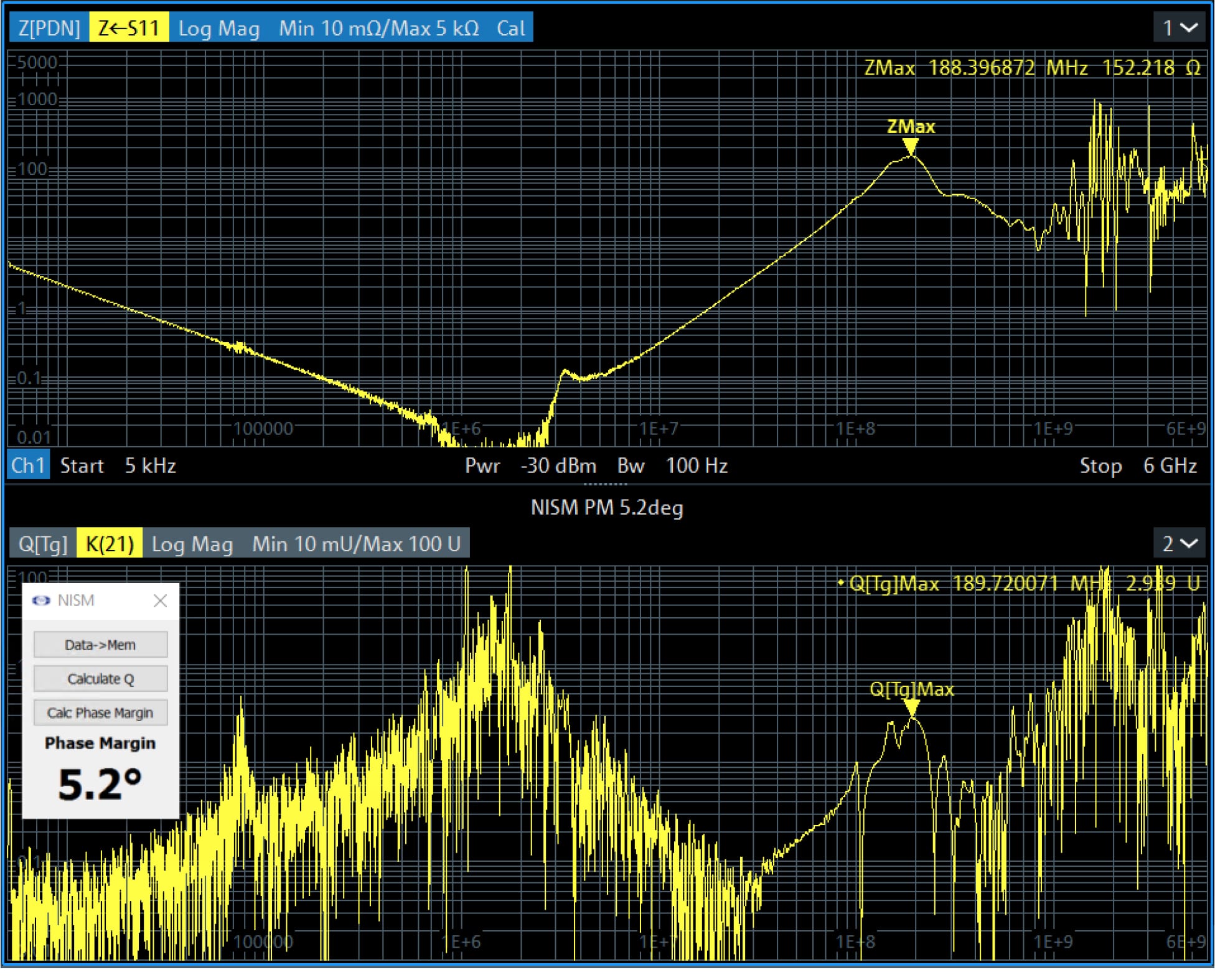Rohde & Schwarz ZNL VNA Gains Non-Invasive Stability Measurement Capabilities
Picotest announced the availability of new software that brings the unique non-invasive stability test capability to the Rohde & Schwarz ZNL and ZNLE vector network analyzers. The software add-on, available now for new or existing customers, allows the instrument to perform non-invasive stability margin (NISM) measurement.
NISM is an alternative to a Bode plot measurement that allows the user to test circuit or filter stability even when the control loop is not accessible. It determines phase margin from an output impedance measurement via group delay. This capability, available for several other VNA instruments (including OMICRON Lab's Bode 100 and Keysight's E5061B and E5071C), allows the user to measure the stability of op amps, voltage references, voltage regulators, LDOs, switching amplifiers, POLs, input filters and all types of power converters through their output impedance.
The software guides the user through a few simple steps to obtain the stability margin from a circuit's output impedance. The measurement results can be saved or printed as with other ZNL measurements.
ZNL users can use one, two, and three port impedance measurements which the software can convert to phase margin. The software supports the full frequency range of the instrument to assess the stability of all types of the aforementioned circuits.
The software is available immediately and is priced at $795. Options add Picotest's 1 and 2 port PDN transmission line probes which greatly ease the measurement of output impedance due to their small form factor and minimal circuit loading (< 0.2pf). The NISM software with the P21B01 1-Port and 2-Port PDN Probe Bundle is $4,290.
In the image below, a 1 port impedance measurement tests the stability of a ~200 MHz opamp. "The big WOW is that we obtained the (very poor) phase margin from the impedance measurement using NISM (just about 5 degrees). This is a great capability; to be able to accurately assess stability at 100's of MHz or higher without lifting any wires (which would interfere with the measurement)," stated Steve Sandler, CEO of Picotest.
Testing Stability When There's No Control Loop Access
The stability of linear or switching regulators, including regulators with no exposed control loops, cannot be assessed using a traditional Bode plot.
"Very often you cannot make a Bode plot for a number of reasons. Either the loop is not exposed, or frequently newer devices have multiple control loops, which are not all accessible. The non-invasive stability margin measurement is the only way to verify stability for these types of circuitsthat provides a numerical phase margin result," said Sandler. "A huge benefit of the measurement is that because it is based on impedance, it can be measured ‘in-situ' with a one probe measurement and non-invasively, that is without impacting the result."
In fact, given opamp and regulator dependency on loading, and the shrinking size of ICs as depicted by the TI LDO image next to a kernel of corn, in-circuit is often the only access available. Traditional loop breakage is not possible.
What is NISM?
Picotest introduced the method in 2011. The method has proven to be an accurate, popular, and simple technique for determining the exact level of stability and phase margin.
The mathematics behind the non-invasive measurement was first incorporated into a VNA in late 2011. Bode plot measurements and non-invasive results are generally within 1 degree of each other up to and including a phase margin of 65 degrees.
Is the Non-Invasive Stability Measurement as Accurate as a Bode Plot?
Yes. In fact, it's accurate in cases where Bode plots are invalid and is not subject to some of the issues that plague Bode plot's accuracy. "In many cases, the NISM is a better assessment of stability than a Bode plot," states Sandler.







